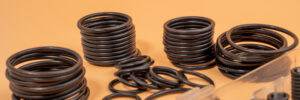
A rubber product manufacturing process refers to the steps employed in transforming natural or synthetic rubber compounds into finished products. Though common, steps like compounding, extrusion, calendering, molding, or vulcanization help rubber engineers and designers achieve specific performance characteristics by directly influencing a product’s physical properties and functionality in applications.










